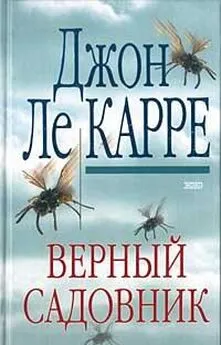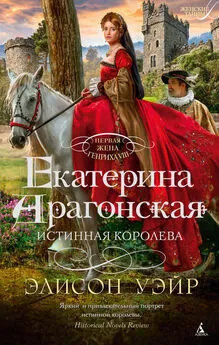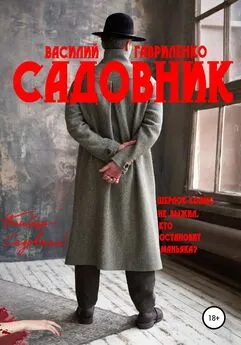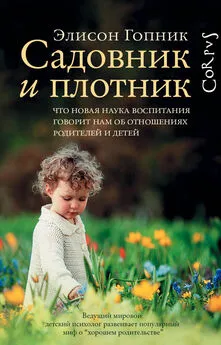Элисон Гопник - Садовник и плотник [litres]
- Название:Садовник и плотник [litres]
- Автор:
- Жанр:
- Издательство:Литагент Corpus
- Год:2019
- Город:Москва
- ISBN:978-5-17-101296-0
- Рейтинг:
- Избранное:Добавить в избранное
-
Отзывы:
-
Ваша оценка:
Элисон Гопник - Садовник и плотник [litres] краткое содержание
Садовник и плотник [litres] - читать онлайн бесплатно ознакомительный отрывок
Интервал:
Закладка:
Примечания
Наука – это совокупный результат усилий, предпринятых тысячами людей, и поэтому по-настоящему полный список литературы для книги такого охвата, как эта, занял бы сотни страниц. Поскольку эта книга адресована широкому кругу читателей, я привела по крайней мере по одной отсылке на каждое эмпирическое утверждение, сделанное в этой книге, и также постаралась подсказать читателю наиболее доступные и информативные научные работы для дальнейшего чтения.
Библиография
Abraham, Eyal, Talma Hendler, Irit Shapira-Lichter, Yaniv Kanat-Maymon, Orna Zagoory-Sharon, and Ruth Feldman. “Father’s Brain Is Sensitive to Childcare Experiences.” Proceedings of the National Academy of Sciences 111, no. 27 (2014): 9792–9797. doi: 10.1073/pnas.1402569111.
Ainsworth, Mary D. Salter, Mary C. Blehar, Everett Waters, and Sally Wall. Patterns of Attachment: A Psychological Study of the Strange Situation . Oxford: Psychology Press, 2014.
Anderson, Jenny. “Suit Faults Test Preparation at Preschool.” New York Times , March 14, 2011. Accessed November 8, 2015.
Antón, Susan C., Richard Potts, and Leslie C. Aiello. “Evolution of Early Homo: An Integrated Biological Perspective.” Science 345, no. 6192 (2014): 1236828. doi: 10.1126/science.1236828.
Antón, Susan C., and J. Josh Snodgrass. “Origins and Evolution of Genus Homo .” Current Anthropology 53, no. S6 (2012): S479 – S496. doi: 10.1086 /667692.
Arie, Sophie. “Dig Finds Ancient Stone Doll.” The Guardian , August 6, 2004. Accessed November 7, 2015. http://www.theguardian.com/world/2004/aug/06/research.arts.
Asch, Solomon E. “Studies of Independence and Conformity: I. A Minority of One Against a Unanimous Majority.” Psychological Monographs: General and Applied 70, no. 9 (1956): 1–70. doi: 10.1037/h0093718.
Atran, Scott, Douglas Medin, Elizabeth Lynch, Valentina Vapnarsky, Edilberto Ucan Ek, and Paulo Sousa. “Folkbiology Doesn’t Come from Folkpsychology: Evidence from Yukatek Maya in Cross-Cultural Perspective.” Journal of Cognition and Culture 1, no. 1 (2001): 3–42. doi: 10.1163/156853701300063561.
Axelrod, Robert, and William Donald Hamilton. “The Evolution of Cooperation.” Science 211, no. 4489 (1981): 1390–1396. doi: 10.1126/science.7466396.
Barnett, W. Steven. “Effectiveness of Early Educational Intervention.” Science 333, no. 6045 (2011): 975–978. doi: 10.1126/science.1204534.
Baron Cohen, Simon. Mindblindness: An Essay on Autism and Theory of Mind . Cambridge, Mass.: MIT Press, 1997.
Bell, Anne Olivier. The Diary of Virginia Woolf . London: Hogarth Press, 1984. [Рус. изд.: Вирджиния Вулф. Дневник писательницы. Пер. Л. И. Володарской. М.: Вагриус, 2009.]
Berlin, Isaiah. The Crooked Timber of Humanity: Chapters in the History of Ideas . Princeton, N. J.: Princeton University Press, 2013.
Berlin, Isaiah. The Hedgehog and the Fox. London: Weidenfeld and Nicolson, 1953. [Рус. изд.: Берлин, Исайя. Еж и лиса. Пер. В. Михайлина / Берлин Исайя. Философия свободы. Россия. М.: Новое литературное обозрение, 2001. С. 69–97.]
Berlin, Isaiah. Liberty . Edited by Henry Hardy. Oxford and New York: Oxford University Press, 2002. [Рус. изд.: Берлин, Исайя. Два понимания свободы. Пер. Л. Седова / Берлин, Исайя. Философия свободы. Европа. М.: Новое литературное обозрение, 2001.]
Bonawitz, Elizabeth, Stephanie Denison, Thomas L. Griffiths, and Alison Gopnik. “Probabilistic Models, Learning Algorithms, and Response Variability: Sampling in Cognitive Development.” Trends in Cognitive Sciences 18, no. 10 (2014): 497–500. doi: 10.1016/j.tics.2014.06.006.
Bonawitz, Elizabeth, Patrick Shafto, Hyowon Gweon, Noah D. Goodman, Elizabeth Spelke, and Laura Schulz. “The Double-Edged Sword of Pedagogy: Instruction Limits Spontaneous Exploration and Discovery.” Cognition 120, no. 3 (2011): 322–330. doi: 10.1016/j.cognition.2010.10.001.
Bonawitz, Elizabeth Baraff, Tessa J. P. van Schijndel, Daniel Friel, and Laura Schulz. “Children Balance Theories and Evidence in Exploration, Explanation, and Learning.” Cognitive Psychology 64, no. 4 (2012): 215–234. doi: 0.1016/j.cogpsych.2011.12.002.
Bongard, Josh, Victor Zykov, and Hod Lipson. “Resilient Machines Through Continuous Self-Modeling.” Science 314, no. 5802 (2006): 1118–1121. doi: 10.1126/science.1133687.
Boyce, W. Thomas, and Bruce J. Ellis. “Biological Sensitivity to Context: I. An Evolutionary-Developmental Theory of the Origins and Functions of Stress Reactivity.” Development and Psychopathology 17, no. 2 (2005): 271–301. doi: 10.1017/S0954579405050145.
Boyd, Danah. It’s Complicated: The Social Lives of Networked Teens . New Haven: Yale University Press, 2014.
Boyd, Robert, and Peter J. Richerson. Culture and the Evolutionary Process . Chicago: University of Chicago Press, 1988.
Brandone, Amanda C., and Susan A. Gelman. “Generic Language Use Reveals Domain Differences in Young Children’s Expectations About Animal and Artifact Categories.” Cognitive Development 28, no. 1 (2013): 63–75. doi: 10.1016/j.cogdev.2012.09.002.
Bransford, John D., Ann L. Brown, and Rodney R. Cocking. How People Learn: Brain, Mind, Experience, and School . Washington, D. C.: National Academy Press, 1999.
Bridgers, Sophie, Daphna Buchsbaum, Elizabeth Seiver, Thomas L. Griffiths, and Alison Gopnik. “Children’s Causal Inferences from Conflicting Testimony and Observations.” Developmental Psychology 52, no. 1 (2016): 9–18.
Buchsbaum, Daphna, Sophie Bridgers, Deena Skolnick Weisberg, and Alison Gopnik. “The Power of Possibility: Causal Learning, Counterfactual Reasoning, and Pretend Play.” Philosophical Transactions of the Royal Society B: Biological Sciences 367, no. 1599 (2012): 2202–2212. doi: 10.1098/rstb.2012.0122.
Buchsbaum, Daphna, Alison Gopnik, Thomas L. Griffiths, and Patrick Shafto. “Children’s Imitation of Causal Action Sequences Is Influenced by Statistical and Pedagogical Evidence.” Cognition 120, no. 3 (2011): 331–340. doi: 10.1016/j.cognition.2010.12.001.
Bufi ll, Enric, Jordi Agustí, and Rafael Blesa. “Human Neoteny Revisited: The Case of Synaptic Plasticity.” American Journal of Human Biology 23, no. 6 (2011): 729–739. doi: 10.1002/ajhb.21225.
Burghardt, Gordon M. The Genesis of Animal Play: Testing the Limits . Cambridge, Mass.: MIT Press, 2005.
Buttelmann, David, Norbert Zmyj, Moritz Daum, and Malinda Carpenter. “Selective Imitation of In-Group Over Out-Group Members in 14-Month-Old Infants.” Child Development 84, no. 2 (2013): 422–428. doi: 10.1111/j.1467–8624.2012.01860.x.
Byrne, Richard W. “The Technical Intelligence Hypothesis: An Additional Evolutionary Stimulus to Intelligence?” In Machiavellian Intelligence II: Extensions and Evaluations, edited by Andrew Whiten and Richard W. Byrne, 289–311. Cambridge: Cambridge University Press, 1997.
Byrne, Richard, and Andrew Whiten. Machiavellian Intelligence: Social Expertise and the Evolution of Intellect in Monkeys, Apes, and Humans. Oxford Science Publications, 1989.
Callanan, Maureen A., and Lisa M. Oakes. “Preschoolers’ Questions and Parents’ Explanations: Causal Thinking in Everyday Activity.” Cognitive Development 7, no. 2 (1992): 213–233. doi: 10.1016/0885–2014 (92) 90012-G.
Capelli, Carol A., Noreen Nakagawa, and Cary M. Madden. “How Children Understand Sarcasm: The Role of Context and Intonation.” Child Development 61, no. 6 (1990): 1824–41. doi: 10.1111/j.1467–8624.1990.tb03568.x.
Carandini, Matteo, Jonathan B. Demb, Valerio Mante, David J. Tolhurst, Yang Dan, Bruno A. Olshausen, Jack L. Gallant, and Nicole C. Rust. “Do We Know What the Early Visual System Does?” The Journal of Neuroscience 25, no. 46 (2005): 10577–10597. doi: 10.1523/JNEUROSCI.3726–05.2005.
Carey, Susan. Conceptual Change in Childhood . Cambridge, Mass.: MIT Press, 1985.
Carhart-Harris, Robin L., David Erritzoe, Tim Williams, James M. Stone, Laurence J. Reed, Alessandro Colasanti, Robin J. Tyacke, et al. “Neural Correlates of the Psychedelic State as Determined by fMRI Studies with Psilocybin.” Proceedings of the National Academy of Sciences 109, no. 6 (2012): 2138–2143. doi: 10.1073/pnas.1119598109.
Carhart-Harris, Robin L., Robert Leech, Peter J. Hellyer, Murray Shanahan, Amanda Feilding, Enzo Tagliazucchi, Dante R. Chialvo, and David Nutt. “The Entropic Brain: A Theory of Conscious States Informed by Neuroimaging Research with Psychedelic Drugs.” Frontiers in Human Neuroscience 8, no. 20 (2014): 1–22. doi: 10.3389/fnhum.2014.00020.
Carpenter, Malinda, Nameera Akhtar, and Michael Tomasello. “Fourteen-Through 18-Month-Old Infants Diff erentially Imitate Intentional and Accidental Actions.” Infant Behavior and Development 21, no. 2 (1998): 315–330. doi: 10.1016/S0163–6383 (98) 90009–1.
Carter, C. Sue, A. Courtney Devries, and Lowell L. Getz. “Physiological Substrates of Mammalian Monogamy: The Prairie Vole Model.” Neuroscience and Biobehavioral Reviews 19, no. 2 (1995): 303–314. doi: 10.1016/0149–7634 (94) 00070-H.
Casey, B. J., Rebecca M. Jones, and Todd A. Hare. “The Adolescent Brain.” Annals of the New York Academy of Sciences 1124, no. 1 (2008): 111–126. doi: 10.1196/annals.1440.010.
Casey, B. J., Nim Tottenham, Conor Liston, and Sarah Durston. “Imaging the Developing Brain: What Have We Learned About Cognitive Development?” Trends in Cognitive Sciences 9, no. 3 (2005): 104–110. doi: 10.1016/j.tics.2005.01.011.
Chapais, Bernard. Primeval Kinship: How Pair-Bonding Gave Birth to Human Society . Cambridge, Mass.: Harvard University Press, 2009.
Cheng, Winnie, and Martin Warren. “Can I Help You: The Use of Rise and Rise-Fall Tones in the Hong Kong Corpus of Spoken English.” International Journal of Corpus Linguistics 10, no. 1 (2005): 85–107. doi: 10.1075/ijcl.10.1.05che.
Chouinard, Michelle M., Paul L. Harris, and Michael P. Maratsos. “Children’s Questions: A Mechanism for Cognitive Development.” Monographs of the Society for Research in Child Development (2007): i – 129. doi: 10.1111/j.1540–5834.2007. 00412.x.
Churchland, Patricia S. Braintrust: What Neuroscience Tells Us About Morality . Princeton, N. J.: Princeton University Press, 2011.
Clutton-Brock, Tim H. The Evolution of Parental Care . Princeton, N. J.: Princeton University Press, 1991.
Cohen, Jonathan D., Samuel M. McClure, and Angela J. Yu. “Should I Stay or Should I Go? How the Human Brain Manages the Trade-off Between Exploitation and Exploration.” Philosophical Transactions of the Royal Society B: Biological Sciences 362, no. 1481 (2007): 933–942. doi: 10.1098/rstb.2007.2098.
Читать дальшеИнтервал:
Закладка:
![Обложка книги Элисон Гопник - Садовник и плотник [litres]](/books/1082744/elison-gopnik-sadovnik-i-plotnik-litres.webp)



![Элисон Диксон - Другая миссис Миллер [litres]](/books/1058289/elison-dikson-drugaya-missis-miller-litres.webp)


![Элисон Уэйр - Джейн Сеймур. Королева во власти призраков [litres]](/books/1074967/elison-uejr-dzhejn-sejmur-koroleva-vo-vlasti-prizr.webp)
![Элисон Робертс - Невероятная случайность бытия [Эволюция и рождение человека] [litres]](/books/1080754/elison-roberts-neveroyatnaya-sluchajnost-bytiya-evol.webp)
![Элисон Блэк - Особенные. Путь к совершенству [СИ]](/books/1092172/elison-blek-osobennye-put-k-sovershenstvu-si.webp)
